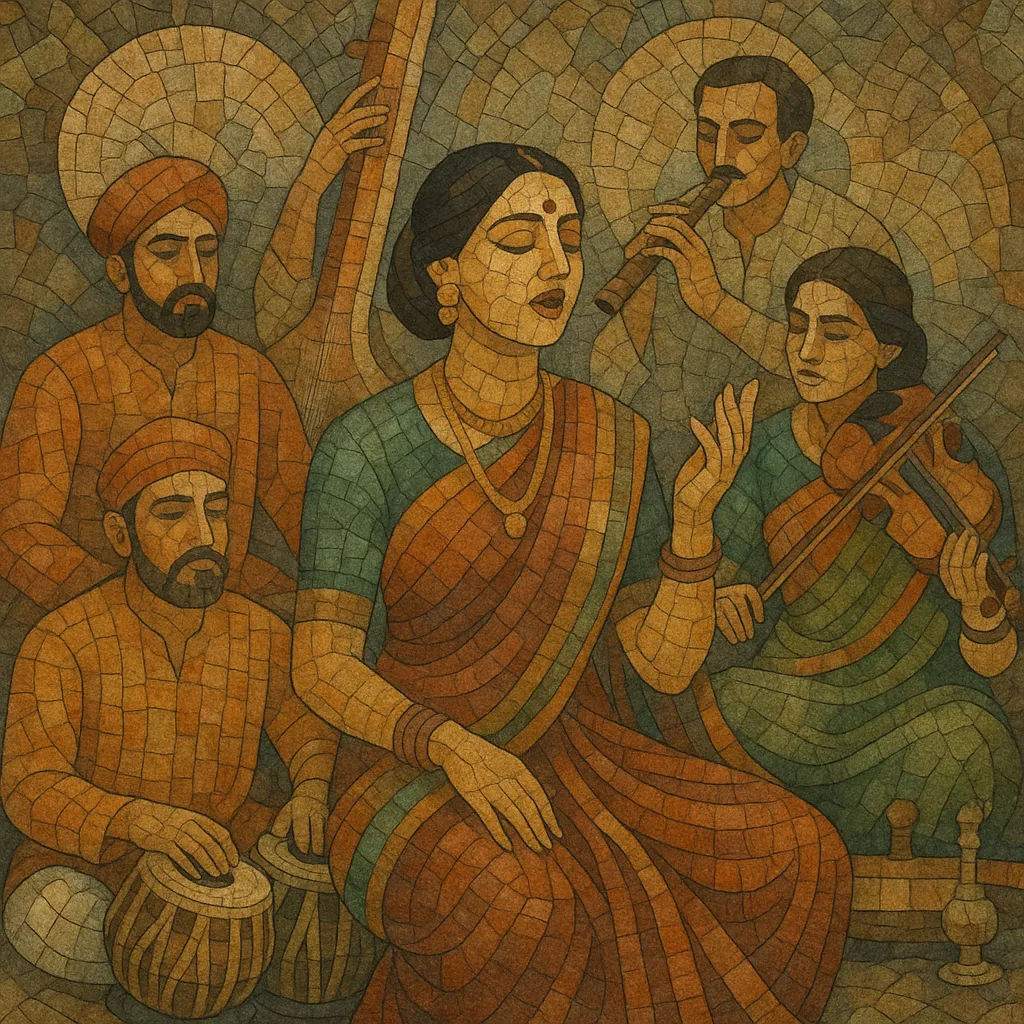Natya Sangeet (also called Sangeet Natak) is the Marathi tradition of raga-based musical theatre songs, created for dramatic performance on stage. It blends the grammar of Hindustani classical music with lighter semi‑classical forms and expressive, character-driven lyrics.
Songs are typically set in specific ragas and taals, but are shaped to serve narrative flow and theatrical expression. The style favors clear melodic lines, ornate yet intelligible ornamentation, and a declamatory delivery that projects emotion to the back of the hall. A small pit ensemble—harmonium, tabla (or pakhawaj), violin/sarangi, flute, and tanpura—supports the singer‑actors.
Although rooted in classical discipline, Natya Sangeet prioritizes dramatic rasa, so compositions often balance virtuosic taans with memorable refrains and accessible Marathi poetry. The genre strongly influenced early Indian film music and remains central to the Marathi stage repertory.
Marathi theatre took shape with pioneers like Vishnudas Bhave in the 1840s, who staged plays with substantial song content. These productions drew on kirtan/abhang traditions and the then-prevalent Hindustani classical idiom, establishing a taste for raga-based narrative singing on stage.
Annasaheb Kirloskar systematized the sung‑play format in the 1880s, founding a model for Sangeet Natak in which plot, dialogue, and raga‑taal compositions were tightly integrated. The ensemble sound—harmonium, tabla, tanpura, violin/sarangi—crystallized, and the pad (song) structure with sthāyī and antara became standard.
The period saw star singer‑actors such as Bal Gandharva, Govindrao Tembe, Keshavrao Bhosle, and Master Krishnarao lift Natya Sangeet to great popularity. Productions featured ornate melodies, classical taans designed for theatrical effect, and lavish staging. Deenanath Mangeshkar bridged rigorous classical training with potent stage charisma.
As cinema rose, the Natya Sangeet approach to melody, raga selection, and dramatic song placement flowed into early Marathi and Hindi films. Playback and on‑screen singing drew directly from this theatre tradition, seeding the DNA of Indian film music.
Artists like Vasantrao Deshpande, Ram Marathe, and later Jitendra Abhisheki refreshed the repertory with new compositions and productions such as Katyar Kaljat Ghusali. Concert renditions, archival recordings, and contemporary performers have kept the style vibrant in the 21st century, even as it coexists with cinema and modern musical theatre.


